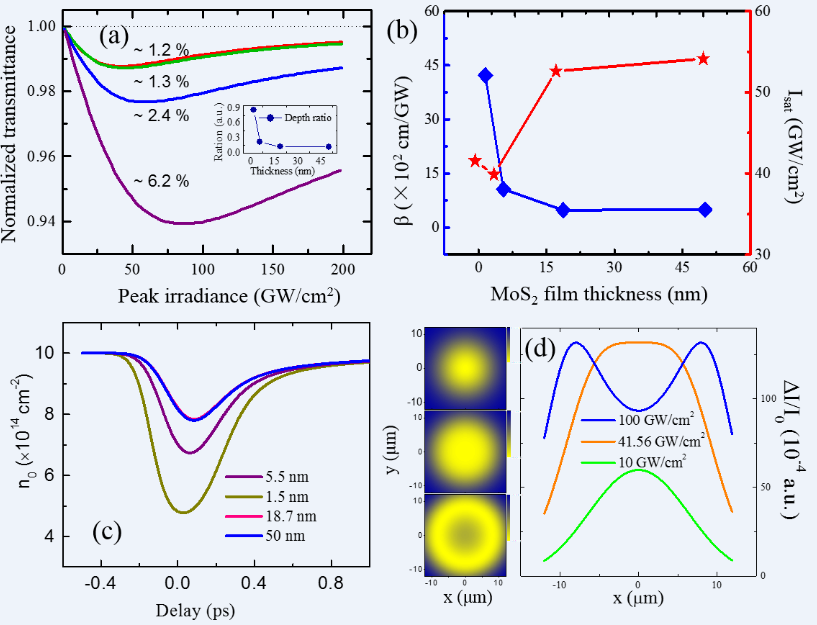Two-dimensional (2D) layered transition metal dichalcogenides (TMDCs) exhibit unique nonlinear optical (NLO) features including layer-dependent second/third harmonic generation, ultrafast saturable absorption, optical limiting, etc., which result in these touted nanomaterials for intriguing and promising applications in the 2D photonic and photoelectric fields.
Also, two-photon effects in MoS2 and WS2 have attracted considerable research interest. Large degenerate two-photon absorption (TPA) coefficient both in monolayer and few-layer MoS2 and WS2 has been reported, and the saturation of the TPA process has been experimentally observed. However, TPA saturation in TMDCs is not yet fully understood, and the characteristics and magnitudes of this third order NLO response in various TMDCs with different thicknesses have not been studied in detail.
Recently, a collaborative study led by Prof. Dr. Wang Jun at Key laboratory of Materials for High-Power Laser, Shanghai Institute of Optics and Fine Mechanics, Chinese Academy of Sciences, investigated the saturation of TPA in four types of layered TMDC nanofilms (MoS2, WS2, MoSe2, WSe2) experimentally and theoretically.
They found that the TPA saturation process in these 2D semiconductors is similar but depends significantly on the thickness of the TMDCs. The results showed that the TPA coefficient is decreased when either the incident pulse intensity or the thickness of the TMDCs nanofilms increases, while TPA saturation intensity has the opposite performance, under the excitation of 1.2 eV photons with pulse width of 350 fs. A three-level excitonic dynamics simulation indicates that the fast relaxation of the excitonic dark states, the exciton-exciton annihilation and the depletion of electrons in the ground state contribute significantly to TPA saturation in TMDCs nanofilms. Large third order nonlinear optical responses make these layered 2D semiconductors strong candidate materials for optical modulation and other photonic applications.
This study, entitled “Saturation of Two-Photon Absorption in Layered Transition Metal Dichalcogenides: Experiment and Theory”, has been published online by ACS Photonics on February 21, 2018.
This work was supported by the Chinese National Natural Science Foundation, the Strategic Priority Research Program of CAS, the Key Research Program of Frontier Science of CAS, and the Program of Shanghai Academic Research Leader.
Related website:
https://pubs.acs.org/doi/abs/10.1021/acsphotonics.8b00010

Figure 1. (a) Normalized transmittance
(b) nonsaturation TPA coefficient and TPA saturation intensity for MoS2 nanofilms with different thicknesses.
(c) Depletion of the electrons in the ground state for different MoS2 thicknesses.
(d) Differential intensity (ΔI/I0) distribution of the output pulse in space under three different excitation conditions, and transverse intensity distribution at y=0.
(Image by Dr. Wang’s lab)